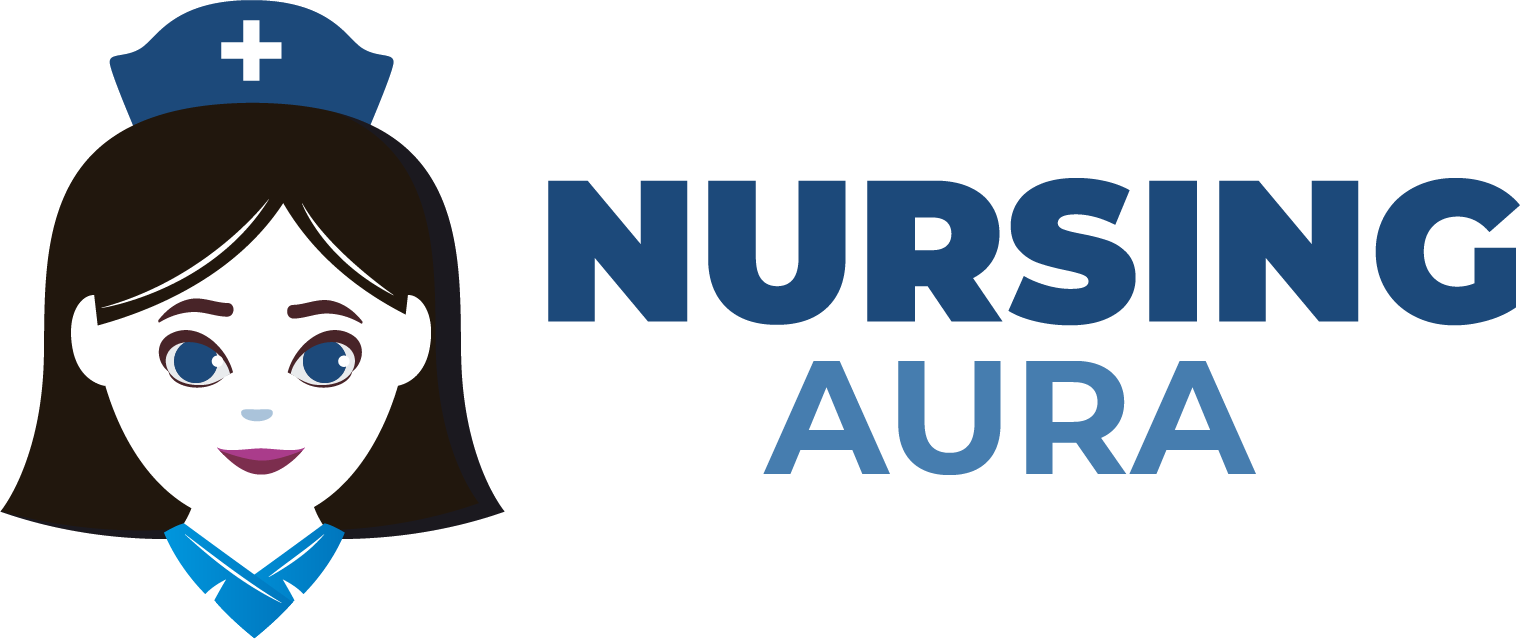The demands of patients vary between inpatient and outpatient nursing care. Patients, care duration, and services differ greatly in these situations. Inpatient nursing, or hospital care, entails admitting patients for overnight or longer. Inpatients need severe medical treatment, surgery, or serious medical issues. Here, nurses, doctors, and experts work together to monitor the patient 24/7. Inpatient nursing care provides sophisticated diagnostic tools, better medical intervention, and quicker emergency response. Medical, rehabilitative, and emotional assistance are provided to patients.
Instead, outpatient nursing is provided in clinics, urgent care centers, and doctors’ offices. Patients with mild diseases, routine checkups, or follow-up appointments seek outpatient treatment. Outpatient nursing care lasts a few hours and restores patients to their homes or routines. Assessment, education, prescription delivery, and self-care are outpatient nurses’ main duties. Tools and information to manage health outside of the hospital are the focus.
The level of acuity can distinguish inpatient and outpatient nursing treatment. For acute, severe, or critical patients, inpatient nursing care requires constant monitoring and intervention. Patients with stable or less severe diseases can maintain their health with occasional visits and advice in outpatient nursing care. Costs also differ between care types. Inpatient treatment is more expensive because complicated medical conditions need extensive services, facilities, and resources. Since outpatient treatment requires less infrastructure and staff, it is cheaper.
In conclusion, inpatient and outpatient nursing care have distinct healthcare aims. Patients with urgent and significant medical demands receive extensive and ongoing treatment in inpatient care, which costs more. For milder instances, outpatient treatment emphasizes patient education and self-management and is affordable. Patients and healthcare providers must understand these variations to choose the best care environment for their needs.
46 differences between Inpatient and Outpatient Nursing Care:
| S.No. | Aspects | Inpatient Nursing Care | Outpatient Nursing Care |
| 1 | Location | Provided within a hospital or healthcare facility where the patient is admitted. | Delivered outside of the hospital, often in clinics, doctor’s offices, or at home. |
| 2 | Admission | Requires formal admission to the hospital as a registered inpatient. | Does not involve hospital admission; patients remain at their usual residence. |
| 3 | Duration of Stay | Typically involves an extended stay, ranging from a day to several weeks or more. | Usually involves brief visits, often lasting a few hours or less. |
| 4 | Medical Condition Severity | Addresses more severe or acute medical conditions requiring 24/7 monitoring and care. | Suitable for less severe or chronic conditions that do not necessitate continuous supervision. |
| 5 | Monitoring | Constant monitoring of vital signs and conditions by nursing staff. | Periodic monitoring during visits; less intensive supervision. |
| 6 | Bed Assignment | Patients are assigned beds or rooms within the hospital. | No bed assignment; patients are not provided hospital rooms. |
| 7 | Nursing Staff | Nursing staff available around the clock for patient care. | Nursing staff available during clinic or appointment hours. |
| 8 | Intensity of Care | Provides more intensive and comprehensive care. | Offers less intensive care and may involve fewer interventions. |
| 9 | Nurse-to-Patient Ratio | Lower nurse-to-patient ratio, allowing for more individualized care. | Typically higher nurse-to-patient ratio, as staff may care for multiple patients. |
| 10 | Availability of Resources | Access to a wide range of medical equipment and resources within the hospital. | Limited access to medical resources outside of the healthcare facility. |
| 11 | Safety Measures | High focus on patient safety protocols within the controlled hospital environment. | Emphasis on patient safety during clinic visits, with fewer in-hospital risks. |
| 12 | Infection Control | Strict infection control measures to prevent hospital-acquired infections. | Still important but less stringent infection control compared to inpatient settings. |
| 13 | Rehabilitation Services | Comprehensive rehabilitation services often available for patients recovering from surgery or illness. | May offer rehabilitation services, but to a lesser extent than inpatient care. |
| 14 | Meals | Hospital provides meals based on dietary restrictions and patient needs. | Patients are responsible for their own meals outside of healthcare appointments. |
| 15 | Bedside Assistance | Assistance with activities of daily living (ADLs) provided by nursing staff. | Patients are responsible for their ADLs and self-care at home. |
| 16 | Family Involvement | Encouraged, with visiting hours and accommodations for family members. | Family involvement important but limited to clinic visits and at-home care. |
| 17 | Discharge Planning | Involves comprehensive discharge planning and coordination of post-hospital care. | Discharge planning typically focuses on follow-up clinic visits and at-home care instructions. |
| 18 | Interventions | Complex medical interventions, surgeries, and procedures are performed in the hospital. | Outpatient interventions are typically less invasive and shorter in duration. |
| 19 | Laboratory Tests | Access to extensive on-site laboratory testing and imaging facilities. | May require external laboratory or imaging appointments. |
| 20 | Medication Administration | Medications are administered by nursing staff according to prescribed schedules. | Patients are responsible for self-administering medications at home. |
| 21 | Transportation | Patients are not responsible for transportation to and from the hospital. | Patients or their caregivers must arrange transportation to healthcare appointments. |
| 22 | Overnight Stays | Patients stay overnight in hospital rooms. | Patients do not stay overnight at the healthcare facility. |
| 23 | Privacy | Limited privacy in shared hospital rooms. | More privacy at home or in outpatient clinics. |
| 24 | Scheduling Flexibility | Less flexibility in scheduling, as care is based on hospital routines. | Greater flexibility in scheduling appointments to suit patient convenience. |
| 25 | Cost | Generally more expensive due to inpatient hospitalization costs. | Usually less expensive than inpatient care, as it does not involve room and board. |
| 26 | Insurance Coverage | May require specific insurance coverage for inpatient hospitalization. | Typically covered by various insurance plans, including outpatient care. |
| 27 | Surgical Procedures | Major surgeries and complex procedures are performed in the hospital. | Minor surgeries and procedures can be performed in outpatient settings. |
| 28 | Length of Medical Records | Inpatient records tend to be more extensive due to longer stays. | Outpatient records are typically shorter but updated with each visit. |
| 29 | Care Continuity | Continuity of care within the hospital environment is generally easier to maintain. | Requires more active patient participation in maintaining care continuity. |
| 30 | Medical Records Access | Access to medical records is typically easier within the hospital system. | Access to medical records may require coordination with multiple healthcare providers. |
| 31 | Follow-Up Care | Follow-up care often occurs within the same hospital or healthcare system. | Patients may need to coordinate follow-up care among various providers and settings. |
| 32 | Emotional Impact | Hospitalization can be emotionally challenging for patients and families. | Offers more comfort and familiarity but may require patient self-management. |
| 33 | Emergency Response | Immediate access to emergency response teams and resources within the hospital. | Patients may need to call emergency services if urgent care is required. |
| 34 | Peer Interaction | Opportunities for peer interaction with other patients in the hospital setting. | Limited peer interaction during outpatient appointments. |
| 35 | Specialized Care | Availability of specialized units (e.g., ICU, NICU) for specific patient needs. | May refer patients to specialized clinics or providers as needed. |
| 36 | Pain Management | More immediate and comprehensive pain management options within the hospital. | Outpatient pain management may involve scheduled appointments. |
| 37 | Access to Specialists | In-house access to various medical specialists and multidisciplinary teams. | May involve referrals to specialists as needed for outpatient care. |
| 38 | Comfort | Hospital rooms and beds designed for patient comfort and care. | Outpatient settings focus on clinical efficiency and may have limited comfort amenities. |
| 39 | Length of Appointments | Hospital consultations and examinations often longer due to comprehensive assessments. | Outpatient appointments typically shorter in duration. |
| 40 | Hospice or Palliative Care | May provide hospice or palliative care services in dedicated units. | Hospice or palliative care may be coordinated at home or through outpatient services. |
| 41 | Social Activities | Limited opportunities for social activities within the hospital. | More opportunities for social activities and engagement at home. |
| 42 | Specialized Equipment | Access to specialized medical equipment and devices as needed for inpatient care. | May require arrangements for specialized equipment outside of the hospital. |
| 43 | Risk of Hospital-Acquired Infections | Higher risk due to shared hospital environment and complex medical procedures. | Lower risk due to limited time spent in healthcare settings. |
| 44 | Patient Advocacy | Advocacy often supported by patient advocacy groups within the hospital. | Patients or family members may need to advocate for their own care in outpatient settings. |
| 45 | End-of-Life Care | In-house support for end-of-life care, including palliative and hospice services. | May coordinate end-of-life care with home healthcare or hospice providers. |
| 46 | Cost Transparency | Costs are often detailed in itemized hospital bills. | Costs for outpatient services may vary and may require coordination with multiple providers. |
Frequently Asked Questions (FAQs)
1. What's the major difference between inpatient and outpatient nursing?
The environment and amount of treatment distinguish inpatient and outpatient nursing care. Patients with acute, severe, or complex medical illnesses are admitted to a hospital for overnight or prolonged inpatient treatment. Outpatient treatment is conducted in ambulatory settings and is ideal for individuals with less severe diseases who do not need overnight stays. Short, recurring outpatient appointments emphasize self-management instruction.
2. Which patients are ideal for inpatient nursing?
Acute, severe, or critical patients get inpatient nursing care. This includes those who need surgery, extensive care, or significant health conditions. Inpatient treatment includes 24-hour monitoring, enhanced diagnostic instruments, and emergency response.
3. Who may get outpatient nursing?
Outpatient nursing is ideal for stable or less severe medical problems. This covers routine checkups, minor disease treatment, follow-up appointments, and outpatient operations. Short outpatient visits are designed to return patients to their homes or normal activities.
4. How do inpatient and outpatient nursing acuity differ?
Inpatient nursing care is for acute and difficult patients, therefore it is more acuity. For severe conditions, continuous monitoring, extensive medical intervention, and specialized care teams are provided. Outpatient nursing care is ideal for stable or less severe patients who can maintain their health with occasional visits and supervision.
5. Are inpatient and outpatient nursing costs different?
There are cost discrepancies between the two forms of care. Due to the complete services, facilities, and staff needed to address complicated medical conditions, inpatient nursing care is more expensive. Outpatient treatment is cheaper since it requires less infrastructure and staff. Outpatient treatment is cheaper for minor medical issues and regular care.

